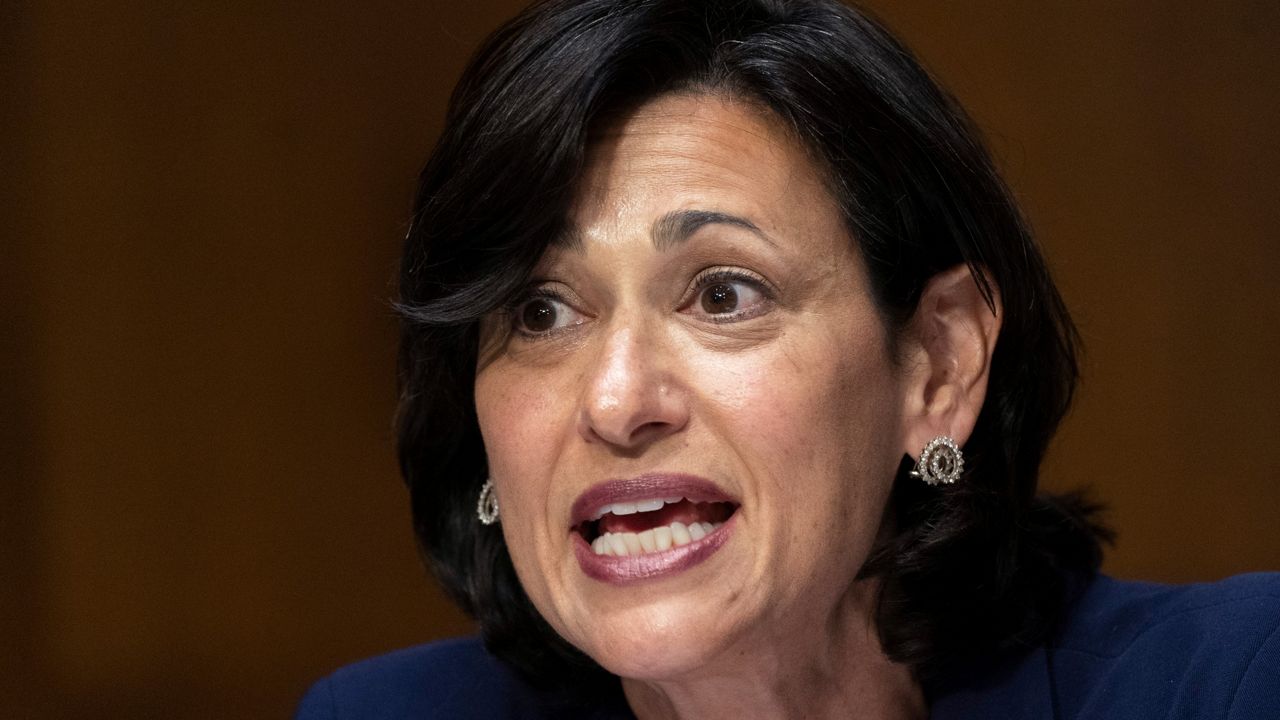Federal health officials stressed Tuesday they have the tools in place to manage the latest worrisome COVID-19 subvariant but called for all Americans to be up to date on their vaccines.
What You Need To Know
- Federal health officials stressed Tuesday they have the tools in place to manage the latest worrisome COVID-19 subvariant but called for all Americans to be up to date on their vaccines
- The omicron BA.5 subvariant now accounts for an estimated 65% of all COVID-19 infections in the United States, Dr. Rochelle Walensky, director of the Centers for Disease Control and Prevention, said during a news briefing
- While breakthrough infections happen, Walensky said vaccines have remained effective against severe disease with earlier omicron strains and “likely also for BA.4 and 5”
- The White House on Tuesday announced its strategy, which includes ensuring easy access to vaccines, prescribing oral treatments at testing sites after someone tests positive, and continuing to provide free at-home tests and high-quality masks to the public
The omicron BA.5 subvariant now accounts for an estimated 65% of all COVID-19 infections in the United States, Dr. Rochelle Walensky, director of the Centers for Disease Control and Prevention, said during a news briefing.
The BA.5 subvariant, as well as the similar BA.4, which makes up 16% of infections as of Tuesday, has a spike protein mutation that allows it to escape some antibodies from vaccination and previous infection, including from earlier versions of omicron.
Dr. Anthony Fauci, director of the National Institute of Allergy and Infectious Diseases and President Joe Biden’s chief medial adviser, said it does not appear BA.5 is more likely to cause severe disease than other recent variants, but he added that the larger volume of infections is leading to increases in hospitalizations.
According to CDC data, the latest seven-day average for infections was around 104,000, although officials believe that is a vast undercount due to at-home tests that are not reported to health agencies and fewer states providing updates.
The number of COVID-related deaths is averaging 281 a day, while hospital admissions are around 5,100 — about twice as high than in April.
While breakthrough infections happen, Walensky said vaccines have remained effective against severe disease with earlier omicron strains and “likely also for BA.4 and 5.”
Dr. Ashish Jha, the White House COVID-19 response coordinator, said most coronavirus deaths today are preventable.
The CDC recommends everyone 5 and older receive their first booster shot at least five months after completing their initial vaccination. The agency also suggests people 50 and older receive an additional shot at least four months after their first booster.
“Vaccines continue to provide strong protection against severe disease,” Fauci said. “However … immunity wanes, so it is critical to stay up to date with COVID-19 vaccines as primary vaccines and as boosters where appropriate.”
Jha made a special appeal to those 50 and older who have not received a vaccine shot in 2022 to do so.
“It could save your life,” he said.
Walensky cited a study showing people 50 and older who received their primary shots and one booster were four times likelier to die from COVID-19 than those who had the primary regimen and at least two boosters.
Only 28% of Americans 50 and older who received a first booster dose have returned for their second, according to CDC data.
The officials cautioned against people delaying their boosters in anticipation of updated vaccines targeting omicron that are expected to be rolled out this fall. They said being boosted today would not preclude people from getting the new vaccines later.
“The threat to you is now,” Fauci said. “If you are not vaccinated to the fullest … then you're putting yourself at an increased risk that you can mitigate against by getting vaccinated.”
Jha said that the Biden administration is well-prepared for the latest COVID-19 threat. The White House on Tuesday announced its strategy, which includes ensuring easy access to vaccines, prescribing oral treatments at testing sites after someone tests positive, and continuing to provide free at-home tests and high-quality masks to the public.
“We can prevent serious illness, we can keep people out of the hospital and especially out of the ICU, we can save lives, and we can minimize the disruptions caused by COVID 19,” Jha said.
Health officials urged Americans to check the COVID-19 transmission levels in their communities and wear masks if the situation calls for it.
As of last week, 32% of the U.S. population was living in high-risk areas and 42% were in medium-risk regions, according to the CDC. The agency recommends people in high-risk counties wear masks indoors in public and people in medium-risk areas to talk to their doctors about wearing masks if they are vulnerable to severe illness.
People can check the transmission rates in their counties at covid.gov.



